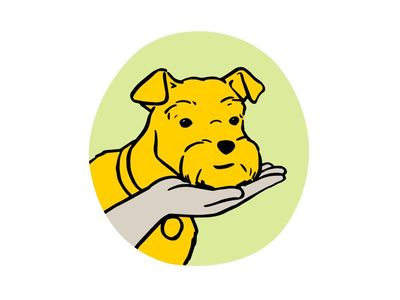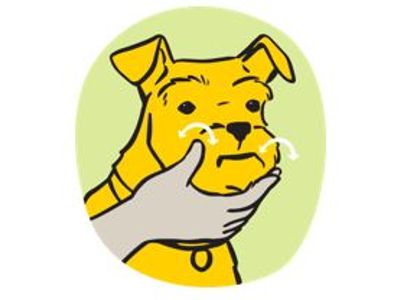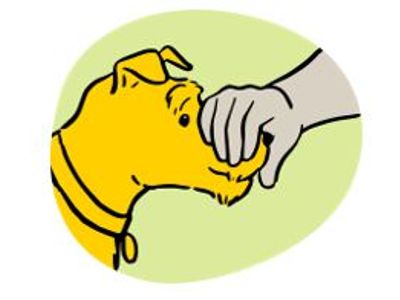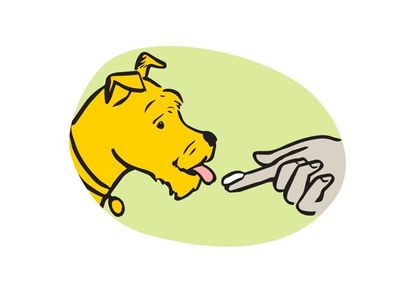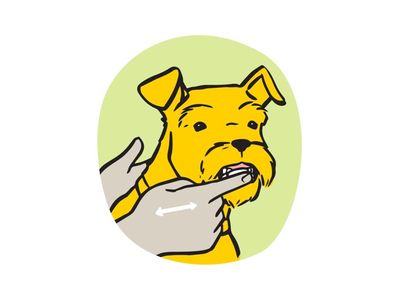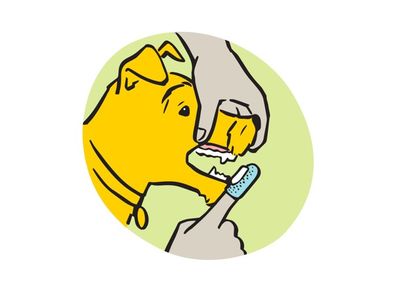Dog dental hygiene and how to clean your dog's teeth
Here’s our guide to fixing your dog’s bad breath and keeping their teeth and mouth clean.
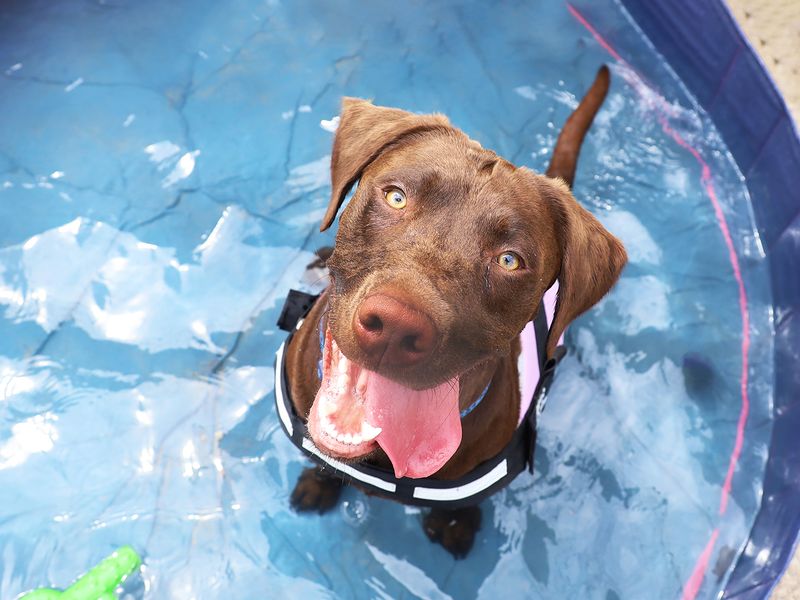
There’s nothing better than finding some time to snuggle with your furry best friend. But when their breath isn’t exactly a bouquet of flowers, it can ruin the moment.
Fear not, there are lots of ways to tackle your dog's bad or fishy breath, while keeping their teeth clean and healthy.
You can get specially formulated dry foods, additives for their water and chew toys that help clean teeth if used frequently. But often, the best way to keep your dog’s teeth clean is by brushing.
Why might your dog have bad breath?
There are several possible reasons your dog’s breath might smell fishy or unpleasant. From poor dental hygiene to something more serious like an infection.
Many causes of bad or fishy breath in dogs are easily resolved. Speak to your vet if you’re concerned. They may just recommend brushing, which we’ll cover on this page.
When should you start brushing your dog's teeth?
- if possible, introduce your dog to having their teeth brushed when they’re a puppy. For dogs of any age, tooth brushing needs to be introduced in a gradual and positive way.
- ideally, brush your dog's teeth daily. You can read our step-by-step guide to brushing your dog’s teeth further down this page.
- if your dog pulls away or is uncomfortable at any point, stop what you’re doing and take a break.
- during your next session, go back a step in the tooth-brushing process to when your dog was relaxed and comfortable. Practise that step slowly and gradually before progressing again.
- if you're struggling to brush your dog's teeth or they show signs of being worried, speak to your vet or seek support from a qualified behaviourist.
What should you use to brush your dog's teeth?
You can buy enzymatic dog toothpaste and a brush or rubber thimble from your vet or pet shop. Enzymatic toothpaste helps break down plaque and reduces bad breath. They also come in enticing flavours like chicken or liver.
Never use human toothpaste as it can be toxic for dogs.
Do you need to brush your dog's teeth?
It’s not always easy to find time in your day to dig out the brush and doggy toothpaste, and it might not be the most glamorous of tasks. But it’s important to look after your dog's teeth. Dental disease is a common health problem for our four-legged friends and can cause them pain from sore teeth and gums.
If you’re able to, daily teeth brushing will help prevent the build-up of plaque and tartar on your dog’s pearly whites. These build-ups can lead to gingivitis and dental disease, so it’s worth doing.
Possible signs of dental problems
It’s sometimes difficult to recognise if your dog is in pain because of dental disease. They’ll often continue to eat, which can hide how serious the problem is.
Here are a few signs to look for that could mean your dog has dental problems:
- bad breath, excessive drooling or blood-stained saliva
- change in their eating habits, e.g. preferring soft food to biscuits
- red or swollen gums (gingivitis- inflammation starts as a thin red line along the gum)
- discolouration of the teeth. Plaque is a sticky, colourless build-up on the teeth. Plaque can then lead to tartar (a hard white to brown coating that causes dental disease)
- swelling on the face
- pawing at or rubbing their mouth or face
- fractured, visibly loose or missing teeth.
Your vet will check your dog's teeth on a regular basis but if your dog shows any of these signs, seek veterinary advice. Many vet practices offer free dental clinics with their vet nurses or free nurse checks with pet care plans.
Brushing your dog’s teeth
Brushing your dog’s teeth regularly is one of the best ways to minimise bad breath. To get started, you'll need to teach your dog how to rest their chin on your hand.
- hold your open hand flat with your palm up in front of your dog’s snout - slightly below chin level.
- in your other hand, hold a treat in front of your dog just below their nose. As your dog reaches for the treat, slowly lower your hand holding the treat towards your open palm. As your dog places their chin across your open palm, mark that they got the behaviour right by saying 'yes' or 'good,’ and reward them with the treat.
- repeat this a few times. Once your dog is getting it right, start to fade out the treat in your hand by repeating the steps with the same motion but no treat.
- reward them with a treat when they place their chin onto your palm. This time, get the treat from your pocket or a treat pouch instead of your hand. Once you've practised this, start to fade out the moving hand by moving it less and less. Do this until you’re able to present just your palm with your dog placing their chin across it.
- reward your dog each time they get it right. Once they’ve got the hang of it, add a verbal cue like ‘chin’, wait for a second, then present your palm for your dog to place their chin on. You can start to increase the duration over sessions by waiting a second before marking and rewarding your dog.
It's important to understand your dog's body language so you can tell when they're feeling uncomfortable or uncertain. Once they have mastered this you can get them used to having their mouth and teeth touched and cleaned.
How to brush your dog's teeth
Follow the steps below slowly over multiple sessions, so your dog can get comfortable with the taste and sensation of toothbrushing.
Introduce touching their mouth
Help support your dog's head by asking them to rest their chin on your hand, then gently touch the outside of your dog's lips. Remove your hand and give your dog a treat straight away.
Repeat this process, briefly touching both the upper and lower jaw. Gradually start …
Progress to touching inside their mouth
Providing your dog is relaxed and comfortable with this, you can progress to touching inside their mouth. With your hand in the same position as before, gently slide a finger inside your dog's upper lips and over the gums. Remove your hand and give them a treat and praise …
Touch their snout
Next work on helping your dog feel comfortable and confident with your hand resting gently on top of their snout. Gently place your hand over their snout and give them a reward. Repeat this and providing they’re relaxed, you can start to add in touching and lifting their …
Touch their teeth
Once they are comfortable with those steps you can lift their top lips and slide your finger over their teeth and gums. You don’t need to open your dog’s mouth, by lifting the upper or lower lip you can reach their teeth. Reward them straight away with praise and treats.
Use the brush
Now you can progress to using the brush to gently touch your dog’s teeth and gums. Start by brushing a couple of teeth in a circular motion. Over multiple, short sessions, build up very gradually until you can brush all the teeth. Brush using a circular motion concentrating …
Add toothpaste
Finally, put a little bit of toothpaste on your brush, let your dog sniff and lick it, then gently slide the toothpaste under their lip and start to brush their teeth in a circular motion.
As always reward your dog for doing so well!
Options alongside brushing
Tooth brushing is the best way to keep your dog’s mouth healthy. Your vet may also recommend water additives, specific food types, treats or toys to help with oral health. These can be used alongside brushing, or while you’re working with your dog to get them used to tooth brushing.
Always consult your vet before using any products alongside brushing, and book in with a nurse or vet for a dental check.
